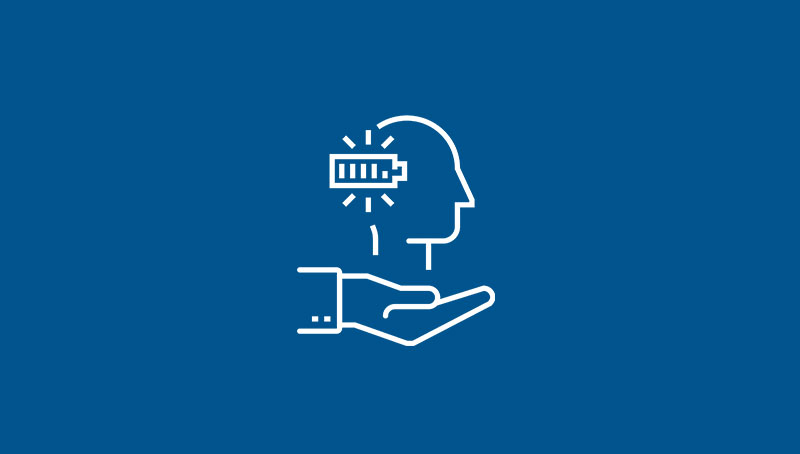Purchase tickets - New Zealand Electrical Conference 2025

It is normal for any disaster response to increase stress and fatigue.
Stress related to the disaster, which could be compassion fatigue, burnout, secondary traumatic stress, and other stress-related health issues can result in difficulties making decisions. Feeling frustrated, arguing more and being physically and mentally drained are other symptoms of emotional exhaustion that can reshape how people make choices. You may not be eating or sleeping, or you may be doing too much of both. You are not alone. These are human reactions to the strain of adapting over and over to situations that threaten your survival and/or ability to cope.
Managing fatigue is essential to ensure your safety and that hazards that pose risks to the health of your employees are effectively controlled.
Managing fatigue following natural disasters
What is fatigue?
Fatigue is defined as the increasing difficulty in performing mental and physical activities as a result of inadequate restorative sleep. It is a symptom, not a specific disorder or disease.
What causes fatigue?
The causes of fatigue are many and varied however topping the list is sleep loss and/or being awake for too long (greater than 17 hours).
Other causes include poor sleep quality, inadequate amount of sleep (less than seven hours), sustained effort, disruption to the body clock or circadian rhythms, inadequate rest breaks, emotional issues and the time-of-day work is performed.
What can happen when workers are fatigued?
If workers do not get enough sleep, or are awake for too long and become fatigued, then it is difficult for them to stay alert and do their job safely.
Fatigue can adversely affect safety at the workplace. Fatigue reduces alertness which may lead to errors and an increase in incidents and injuries, particularly when:
• operating fixed or mobile plant, including driving vehicles.
• undertaking critical tasks that require a high level of concentration.
• undertaking night or shift work when a person would ordinarily be sleeping.
The short-term consequences of fatigue include:
• decreased alertness
• slowed reaction time
• poor hand-eye coordination
• higher error rates
• reduced vigilance
• reduced decision-making ability
• poor judgement and risk assessment capability
• being easily distracted during complex tasks
• difficulty responding to emergencies
• inability to remember the sequence of events.
The longer-term health effects of fatigue can include:
• heart disease
• diabetes
• high blood pressure
• gastrointestinal disorders
• lower fertility
• anxiety
• depression.
Who is responsible for managing fatigue?
Both workers and managers share the responsibility of managing fatigue.
It is the manager’s responsibility to ensure that the work being performed (including rosters and working hours) does not put workers at risk of becoming fatigued.
It is the worker’s responsibility to ensure that they use their time off wisely and get a sufficient amount of sleep.
How to identify if your workers are fatigued
Consider roster design and workload factors that can contribute to your workers fatigue risk. These include:
• long working hours including shifts of 12 hours or more
• working through the night and early mornings
• backward rotating rosters which decrease the opportunity for sleep
• early start times (before 6am)
• performing critical and complex tasks during the early hours of the morning.
Look out for workers showing symptoms such as:
• physical symptoms – yawning, eye- rubbing, head dropping, unintentional sleep.
• mental symptoms – difficulty concentrating on the current work task, lapses in attention, difficulty remembering what they are meant to be doing, failure to communicate important information to a colleague, failure to anticipate events or actions, unintentionally performing the task incorrectly, or omitting, forgetting or failing to complete a task properly.
• emotional symptoms – quieter or more withdrawn than normal, lethargic or lacking in energy, lacking in motivation to do the task well, or irritable or bad tempered behaviour with colleagues, family or friends.
How can I manage the risk of fatigue to my workers?
• Roster shifts so that workers are provided the opportunity for a continuous seven to eight hours sleep in each 24 hour period.
• Roster shifts so that workers are provided at least 50 hours sleep for every seven days.
• Rotate shifts forward rather than back.
• Limit number of consecutive night shifts to four.
• Finish night shifts by 8 am.
• Allow a minimum of 12 hours between consecutive shifts.
• Roster at least two full night’s sleep after the last night shift.
• Provide frequent rest breaks during shifts.
• Provide transport where possible to minimise the risks associated with commuting.
• Provide an area/room for workers to sleep before commuting home.
• Schedule safety critical and complex tasks during the daytime (when workers are most alert).
• Allow and encourage access to Master Electricians Employee Assistance Programme as workers require.
DID YOU KNOW???
Being awake for 17 hours = a blood alcohol level of 0.05
Being awake for 20 hours = a blood alcohol level of 0.1
Additional resources:
